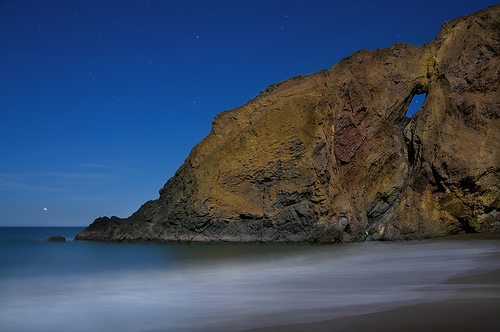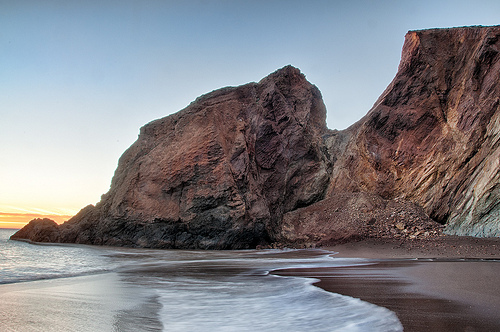For many years one of the pleasures of the two-mile hike down to Tennessee Beach in the Marin Headlands has been to view the wonderful hole in the cliff on the north side of the beach. This dramatic formation as it appeared in 2007 can be seen in the photo below, which is lit by moonlight. A star appears through the hole in the cliff in the photo.

Sometime during the tumultuous storms of the last few weeks this cliff collapsed, presumably brought down by rain and wind. The impact on the appearance of the north end of Tennessee Beach is tremendous and visceral, as you can see in the 2013 view of the scene below that I shot yesterday.

Looking at the fault line exposed by the landslide, it seems likely that erosion will continue. Perhaps the cliff jutting out into the sea is doomed to become an island sea stack in the course of time. But I am no geologist.
The cliffs looking north from Tennessee Beach are still spectacular, although I miss the unique formation of the hole in the cliff.
This slide in a beloved landscape is a reminder that nothing lasts forever, and that the only constant is change. Confronted with clear evidence that even something as apparently immutable as the iron-bound cliffs of the Marin Headlands are not static we have to conclude that our lives will change as well—in ways that are hard to expect or predict, and out of our control.
Change can be disconcerting, particularly when it is precipitated by exogenous events—the human equivalents to landslide. The way to survive in style is to eschew denial, and accept that the unpredictable is by definition unpredictable.